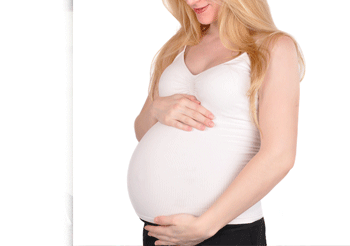- Home
- /
- News and Events
- /
- News Releases
- /
- Release
- /
UAlbany Study Links State Tax Credit Programs to Higher Birth Weight
Contact(s): Catherine Herman (518) 956-8150
 |
A UAlbany study found evidence that participation in state Earned Income Tax Credits program is directly linked to higher birth weights. |
ALBANY, N.Y. (August 2, 2010) -- Relieving poverty during pregnancy can reduce the incidence of low birth weight babies and may help break the succession of childhood poor health, a University at Albany study has found.
How healthy a baby is at birth can set the stage for later life outcomes such as IQ, education, and adult health, says the study. Babies born to poor mothers frequently weigh less at birth than those born to middle class and wealthier mothers. Lower birth weight babies, particularly those under 5.5 pounds, are at higher risk of dying in the first year of life. They are less likely to excel academically and obtain high school degrees. As adults they earn less than babies who were larger at birth and are at risk of reproducing the cycle of inequality over generations.
Improved Prenatal Health, Reduced Smoking, Through EITC
In "Effects of Prenatal Poverty on Infant Health: State Earned Income Tax Credits and Birth Weight," published in the August 2010 issue of the American Sociological Association's (ASA) American Sociological Review, the researchers tested whether access to state anti-poverty programs diminished the occurrence of low birth weight, at-risk babies. In particular, the authors used the recently expanded, state-based Earned Income Tax Credits (EITC) programs to determine whether improved income in single mothers suggested improved prenatal health, higher birth weights, and reduced maternal smoking. The EITC, the tax credit programs that supplement the incomes of low-wage workers, comprise the largest anti-poverty plans in the U.S., and in many states have supplanted traditional welfare programs.
-------------------------------------------------------------------------------------------------------
For the full study, contact the Office of Media Relations
-------------------------------------------------------------------------------------------------------
The study's authors found evidence that participation in state EITC is directly linked to higher birth weights, including reducing chances that a mother smoked during pregnancy.
"The EITC reduces poverty for millions of families each year. But, we know very little about how it affects families and children beyond income," said Kate Strully, lead author of the study and a professor of sociology and epidemiology at the University at Albany. "Our study offers encouraging evidence that, by relieving poverty with this tax program, we are helping women have healthier babies."
--------------------------------------------------------------------------------------------------------
UAlbany sociologist Kate Strully on ABC News: Job Loss Can Make You Sick
--------------------------------------------------------------------------------------------------------
Because the EITC is targeted at low-wage workers and significantly impacts the employment of single mothers, the authors limited their primary samples to unmarried mothers with a high school degree or less. To test the effects of state EITC on earnings and employment, the study obtained data from the 1980 through 2002 U.S. Natality Detail File, a statistical record of nearly every birth in the United States. Information in the Natality File is collected directly from birth certificates, ensuring that birth weights, recorded by medical professionals rather than recalled by survey respondents, are accurate. Further data, including income and household information, were collected from the 1980 through 2002 March demographic supplements to the Current Population Surveys (CPS). The annual data, collected by the U.S. Census Bureau, are based on a rotating national probability sample of 58,000 households. To qualify for EITC, a person must have some earnings but have an adjusted gross income below a threshold that varies by year and by family size.
Strully cautions that not all anti-poverty policies or programs such as EITC produce health improvements among babies born to high-risk mothers. In addition, the study suggests that mothers age 19 to 35 who live in states with active EITCs benefit more from the tax breaks and incentives than younger women or mothers over 35.
Kate Strully conducted the study as a Robert Wood Johnson Foundation Health & Society Scholar at Harvard University.
Resources
State EITC Home Page
Infant Health CDC
Related Links
New York State EITC
University at Albany Department of Sociology
![]() For more news, subscribe to UAlbany's RSS headline feeds
For more news, subscribe to UAlbany's RSS headline feeds
Educationally and culturally, the University at Albany-SUNY puts "The World Within Reach" for its 18,000 students. An internationally recognized research university with 58 undergraduate majors and 128 graduate degree programs, UAlbany is a leader among all New York State colleges and universities in such diverse fields as public policy, nanotechnology and criminal justice. With a curriculum enhanced by 300 study-abroad opportunities, UAlbany launches great careers. For more information about this globally ranked University, visit www.albany.edu. For UAlbany's extensive roster of faculty experts, visit www.albany.edu/news/experts.shtml.


